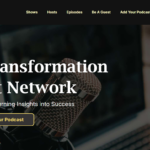“To go fast, go alone. To go far, go together.” (African Proverb)
Ecosystem is the new organization. Value is the new currency. In our digital, connected world we are shifting from orienting around value chains to business ecosystems, where we can generate more value by working together.
Futurist Frank Diana defines an ecosystem as: “A complex network of connected stakeholders that depend on and feed each other to create and capture value for all ecosystem participants.”[i] A business ecosystem could include a variety of individuals and entities, including corporations, startups, government agencies, non-governmental organizations, advocacy groups, research institutions, universities, investors, and more.
Business ecosystems form for a variety of reasons, such as to support startups and innovation, facilitate the circular economy, promote collaboration and data sharing in contexts like open banking, or create a network of complementary services that enhance customer experience and drive mutual growth.
Key Factors for Effective Business Ecosystems
At the core, a business ecosystem must have a purpose, a value proposition, and participants, with defined roles and interactions. Business ecosystems also need clear governance structures, a collaborative culture, and other key elements that support their effectiveness.
Business ecosystems should also be designed with intent, ensuring that the participating entities are coherently organized to effectively achieve their purpose. In my consulting and advisory work with corporate, startup, governmental, and cross-sector ecosystems, I’ve observed the critical importance of design know-how and purposeful intent for their success.
I am reminded of conversations from two events earlier this year—one within the context of a smart city event, which included discussions about a newly designated European regional innovation valley[ii], and the other at the UNIDO World Entrepreneurs Investment Forum[iii]. These two examples highlight the crucial role ecosystems and collaboration play in leveraging innovation to solve global challenges.
The key challenge I heard repeatedly went beyond typical assumptions like access to funding or markets; it was the need for better connection. The questions raised were: “How do we find the right organizations and individuals to partner with?” “How do we make others aware of what we do and offer?” and “How can we identify the key intersections for collaboration?”
Connecting the entities within an ecosystem often require heroic efforts in networking and marketing, and often relies upon the tribal knowledge and specific connections of certain individuals or organizations for effective matchmaking. What’s missing is the glue—a formal, methodical, intelligent framework for connecting and matchmaking.
If the role of business ecosystems is crucial to the success of our organizations, societies, and global goals, can we do this better?
The Nexus of Business Ecosystems
We can. Capabilities serve as the nexus of business ecosystems, acting as central connecting points that link various entities. They facilitate interaction, collaboration, and value exchange, creating a hub that brings together the different participants and components of the ecosystem.
Capabilities are reusable business building blocks that define an organization’s or ecosystem’s ability to perform unique business activities, enabled by people, processes, and technology. They can be assembled to deliver value to stakeholders, orchestrated through defined value streams and experience journeys. Capabilities also act as a bridge between strategic direction and implementation by providing insight into what an organization or ecosystem is currently capable of and highlighting areas for enhancement to fulfill that direction.
Capabilities provide a catalog and common mental model of what an ecosystem does collectively, acting as the glue—a methodical, intelligent framework for connection that can be utilized by anyone within the ecosystem.
Let me share an example. At the smart city event this year, I discovered a clever invention: a configurable wheel[iv] that can be used for agricultural functions, transporting goods, energy generation, and more. The potential value of this invention is immense across a wide range of use cases in both developed and emerging markets. However, the challenge of matchmaking is significant—it’s akin to finding a needle in a haystack.
This is where the capability view of an ecosystem helps us to connect the dots. Instead of cataloging this invention merely as an asset, we can catalog it according to the capabilities it enables, such crop management, shipment delivery, or energy generation. This approach allows us to make the solution discoverable by all the individuals and organizations that need these capabilities.
Imagine if we could harness the collective power of our knowledge and solutions from around the world and leverage capabilities as connectors to match them to those who need them most. This would not only be valuable for commerce, but also essential for collaborating to achieve the UN Sustainable Development Goals and address our global challenges.
Putting the Ideas Into Practice
If you are part of a business ecosystem focused on innovation, startup development, the circular economy, or otherwise, begin by adopting a capability mindset. Define a comprehensive map or catalog that represents the capabilities your ecosystem collectively offers. Next, share this capability map with stakeholders across your ecosystem to foster a shared understanding and mental model. Encourage feedback to refine the map, ensuring it accurately reflects the ecosystem’s needs and strengths.
Following this, catalog the entities within your ecosystem based on the capabilities they provide Actively use this map to support connection and collaboration efforts. By utilizing this framework, you can enhance collaborative efforts within your ecosystem, ensuring that all participants are aligned, effective, and working towards common goals.
Corporate leaders can also leverage the concept of capabilities to identify what their organizations need to collaborate effectively with partners. Assess where you can integrate with startups or other organizations to enhance your capabilities. This strategic alignment will enable your organization to tap into external innovations and resources, fostering a collaborative environment that drives growth and impact.
In a world where collaboration is essential for progress, the potential of business ecosystems is immense. By embracing a capability-driven approach, we can create frameworks that not only enhance individual organizational effectiveness but also foster collective impact across entire ecosystems. By harnessing our combined strengths, knowledge, and resources, we can build a future where innovation thrives, and the goals of sustainable development are within reach.
[i] “The Rise of Ecosystems,” Frank Diana, January 18, 2018. https://frankdiana.net/2018/01/18/the-rise-of-ecosystems/
[ii] European Regional Innovation Valleys aim to “to harness the full innovation potential across Europe, connecting less and more innovative regions and addressing social challenges through cutting edge technology.” https://projects.research-and-innovation.ec.europa.eu/en/strategy/support-policy-making/shaping-eu-research-and-innovation-policy/new-european-innovation-agenda/new-european-innovation-agenda-roadmap/selected-regional-innovation-valleys
[iii] Learn more about the UNIDO WEIF event in May 2024: https://news.un.org/en/story/2024/05/1149741
[iv] Please see: https://punda.no/
Tag/s:Business TransformationDigital DisruptionEcosystemFuture of WorkOrganizational Change





